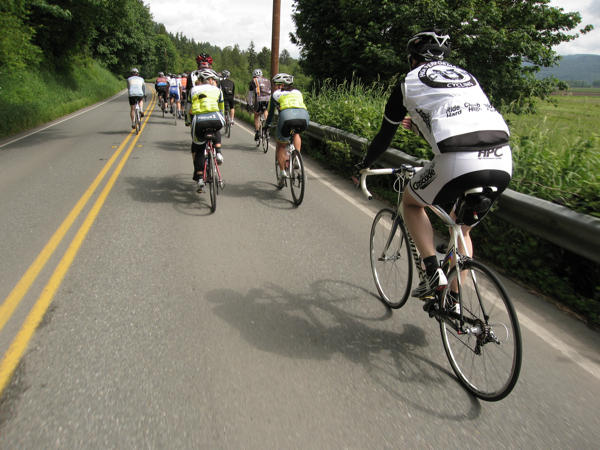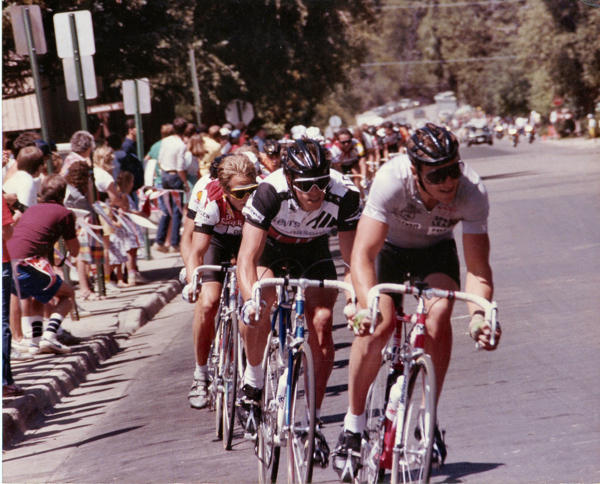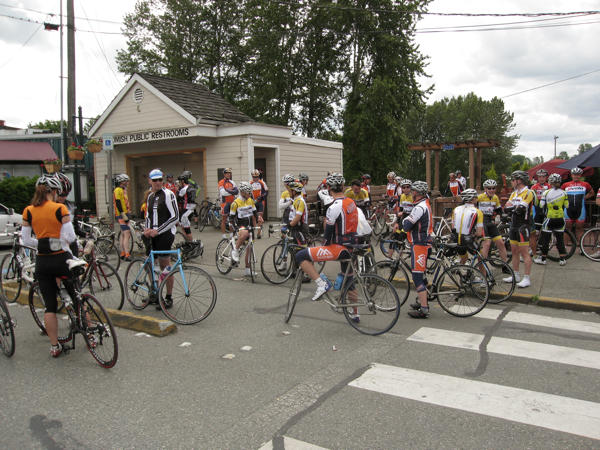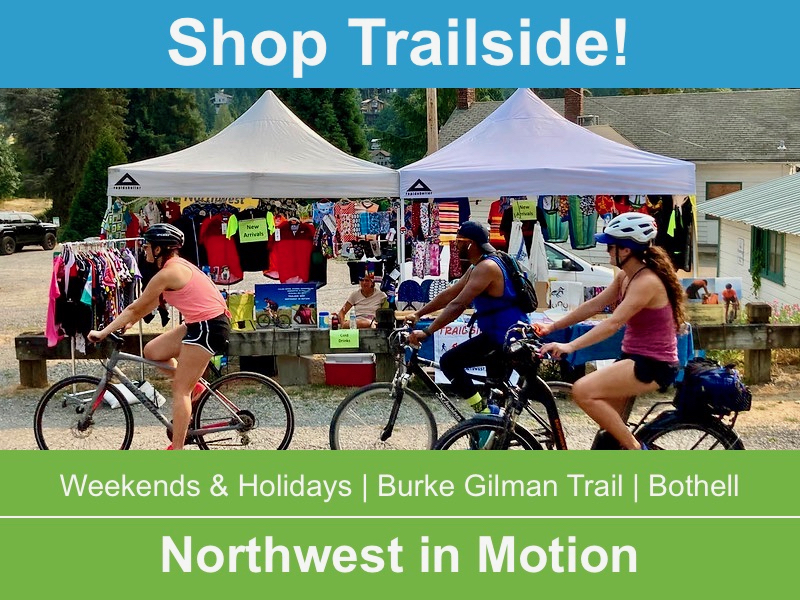Glenn Erickson is one of Seattle’s cycling icons: He’s an accomplished racer, a master frame-builder, co-founded R+E Cycles, and runs Erickson Cycling Tours. In August 2009 Glenn was diagnosed with Parkinson’s disease.

Parkinson’s disease (PD) results from the loss of dopamine-producing brain cells. The four primary symptoms are 1) trembling in the hands, arms, legs, jaw, and face, 2) stiffness of the limbs and trunk, 3) slowness of movement and 4) postural instability. As these symptoms become more pronounced, patients may have difficulty walking, talking, or completing other simple tasks. PD usually affects people over the age of 50. Early symptoms of PD are subtle and occur gradually. In some people the disease progresses more quickly than in others. As the disease progresses, the shaking, or tremor, which affects the majority of PD patients may begin to interfere with daily activities. Other symptoms may include depression and other emotional changes; difficulty in swallowing, chewing, and speaking; urinary problems or constipation; skin problems; and sleep disruptions. There are currently no blood or laboratory tests that have been proven to help in diagnosing sporadic PD. Diagnosis is based on medical history and a neurological examination. The disease can be difficult to diagnose accurately. Doctors may sometimes request brain scans or laboratory tests in order to rule out other diseases. (Source: National Institute of Neurological Disorders and Stroke.)
Glenn has responded well to treatment, and as a way to contribute to the effort to cure Parkinson’s, Glenn hosts an annual benefit ride with the proceeds going to the Davis Phinney Foundation.
I joined the this year’s edition of the ride, which was held last Sunday, June 3. I must admit that I’m just a tad skittish about large group rides, and wasn’t sure how I’d feel about doing this ride, which attracted about 150 folks. I was amazed at how well the group flowed; it was the safest I’ve ever felt in a group that big. The only problem I saw was that a rider’s chain snapped, which could have been catastrophic, but only caused a slow down.
Glenn and I chatted a bit during the ride, and we followed up via email:
How did you get into cycling?
I got a bike for college commuting in 1965 and never let go. A friend and I opened a bike repair shop in 1973. It became very successful. In the process I became a decent frame builder. In 1975 my girlfriend (now wife) and I started a European bicycle tour business which is still doing great.
How did you get into racing?
I got home after 3 months of touring in Europe 1972, went to watch a race and realized that I could easily beat anyone in the novice field so I entered and won, and that was the start of a lifelong passion for me.
What are some of your cycling highlights?
I have lots of NW medals–road, TT, track even cyclocross. I have some national medals in masters, including 4 gold medals in track, criterium, road, and tandem. I have one senior national medal in tandem time trial. I rode a tandem on STP, and set a still unbeaten time of 8 hours flat. I also won the tandem stage race in Oregon. And of course the most fun of all my cycling has been touring in Europe with a friend or two, and also when it turned from a hobby to a touring business.

Tell us about how the diagnosis came about.
Parkinson’s is sneaky, many of the symptoms are similar to aging, only at an accelerated rate. For 4 or 5 years before it was diagnosed, it snuck up on me, then in 2008 it stopped sneaking and came on like a gangbuster. I didn’t know what was going on, but one of my tour clients, a doctor, told me he was sure I had Parkinson’s. That was a key moment in my life. One might think that this could be a crushing blow, a very sad diagnosis, but I felt somehow elated. First I wasn’t getting old so fast, but more importantly, I could fight this, it was something identifiable, giving me hope for improvement instead of the constant degeneration I was experiencing. Read more about the symptoms and treatments.
What is the treatment regime?
I take the common Levidopa / Carbidopa, that most Parkinson’s patients get in the beginning. This helps produce a little dopamine in the brain. I also take Azelect though its effects are a little vague; supposedly it keeps the dopamine from deteriorating so fast. It is also suspected of slowing down the progression of the Parkinson’s. The Azelect is quite expensive but it may be the best thing going for me, as I don’t feel any different now than I did 4 years ago when I started taking the medications.
Have you had to make any changes to your lifestyle?
I really haven’t made much in the way of changes. I quit making bicycle frames when the symptoms were really affecting me, before the diagnosis. So that was a change already in progress. The only real problem I have is speech is a little hard, pronunciation is sometimes difficult, and it is hard for my mouth to coordinate with what the mind is thinking, lagging behind and getting all mixed up. I also have a little shaking in my right arm, but I am capable to control it. Being that Parkinson’s affects the muscles I have experienced a distinct loss of cycling strength.
What role have family and friends played in the process?
Everyone has been great, but more to the point, they are glad that I have improved so much with the medications. It is important to know that so far I have been fairly lucky. I don’t have any big obvious symptoms. No one should think for a second that the average Parkinson’s patient has it easy like me, I am the exception, at least so far.

Tell us about how the benefit ride came about.
After 40 years in the bike world, my name is fairly well known in Seattle. I am not as famous as Davis Phinney, but known well enough locally that I thought I could achieve some good by taking advantage of the situation. A charity ride seemed a good bet. Since I was the head figure, why not use one of my favorite training rides as the venue? Also a lot of my enjoyment in riding has been to ride with a large group, with everyone working hard and sharing the load. I wanted everyone to ride together so we made it a group ride. We focus on the camaraderie, because the greatest thing we all have gotten from our involvement has been the friends we have made and the extended family we have become.
What are the goals for the ride?
The goal is not to make money, but to create some awareness of Parkinson’s. Of course the money is great, giving it to a good cause like the Davis Phinney foundation can do some good, but we know our limits. The best we can ever do won’t get the Davis Phinney Foundation very far, so the money is only symbolical of our desire to help in what ever way we can. I would love to give Davis Phinney $100,000, but I wouldn’t know how to go about raising that kind of money. So yes, we were very successful. We had over 150 riders take part, including some who came from as far away as Utah. And most important, everyone had a great time.

What are the long-term plans for the ride?
We would like to change it a bit, but we have no real plans. It would be nice to keep it fresh, keep people excited about it. It might be fun to have some sort of a BBQ afterwards. After the ride a bunch of us got together at a local restuarant. However, this time of year I am getting ready to leave for my tour leading in Europe, so there is only so much we can do. Right now there are only three of us working on the ride , me, my wife Nancy and my great friend Jim Rupert–I really want to thank them for their help.
